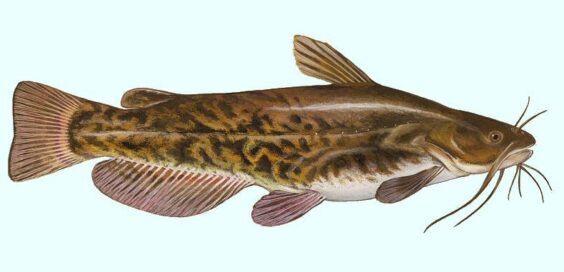
Creature Feature – Bullhead Catfish
Posted by Dustin Horton // August 17, 2021 // Articles, Creature Feature
Bullheads average between 8-14” long with elongated bodies and smooth, slippery skin. They range in color from ochre-brown to blue-black along their backs and sides with pale bellies. Squared-off tails help distinguish them from channel catfish, which have deeply-forked tails.
Bullheads have sensitive whiskers, called ‘barbels’, around their mouths. The barbels can’t hurt you; but getting stuck by sharp spines located on the pectoral and dorsal fins can sting for hours after an irritating, but otherwise harmless toxin, gets released.
Most active at night, bullheads forage on or near the lake bottom for plants, algae, insects, worms, mollusks, crustaceans, crayfish, small fish and fish eggs. They have poor vision, relying instead on sensory adaptations to find food. Their whiskers, mouths and bodies are packed with thousands of taste buds, and they have a heightened sense of smell. Bullheads also use these extraordinary senses to communicate with one another.
Research suggests that bullheads are monogamous during each May-June breeding season. Males are the primary caregivers, guarding the eggs and young until they’re around 1” long. The babies linger in the shallows, swimming in a compact ball.
Larger bullheads sometimes avoid being eaten thanks to their sharp spines, but smaller ones are taken by several wild predators. Meanwhile, anglers catch bullheads from shore at night using earthworms, doughballs or stinkbaits fished off the bottom.
Article: Margie Manthey
Illustration: WordPress.com












